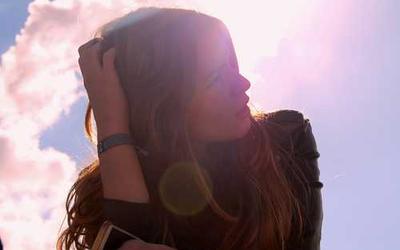🇭🇷 Croatia
Croatia Travel Guide - Local Insights & Authentic Experiences
4 destinations · Budget level 2
Overview
Croatia is Europe's fastest-growing remote work destination where medieval architecture meets crystal Adriatic waters and modern tech infrastructure. Croatian culture revolves around 'fjaka' (blessed state of doing nothing), family konoba meals lasting hours, and fierce regional pride between coastal Dalmatians and continental Zagorje people. The concept of 'pomalo' (take it easy) defines Croatian approach to life - coffee meant for lingering, not rushing. Post-independence generation built thriving startup scene while preserving grandmother's recipes for peka and maintaining stone house traditions on 1,000+ islands.
Travel tips
Digital Nomad Visa: Croatia offers one-year visa for remote workers earning €2,300+/month from foreign employers. Coastal vs Continental: Dalmatian coast expensive in summer, Zagreb affordable year-round, inland villages authentic and cheap. Island Ferry Planning: Jadrolinija ferries book early for summer, locals bring own food and drinks for long journeys. Konoba Culture: Family-run taverns serve what's fresh that day, trust waiter's recommendations over menu. Coffee Ritual: Ordering single coffee and sitting 3 hours normal, locals never rush 'kava' conversations. Rakija Respect: Accept offered rakija (fruit brandy), refusing insults Croatian hospitality traditions.
Cultural insights
Croatian society values family, fjaka relaxation philosophy, and passionate sports loyalty (especially football and water polo). Coastal Dalmatians are extroverted and laid-back, Zagorje people more reserved and hardworking - regional stereotypes locals embrace humorously. 'Konoba' family restaurants preserve grandmother's recipes and serve wine from family vineyards. Summer brings 'ganga' traditional singing in Dalmatia and klapa acapella groups. Post-war generation balances EU modernity with Mediterranean traditions - tech startups operate from stone houses, digital nomads mix with fishermen at morning markets. Croatia was voted #1 most-liked country in Europe by nomads for genuine warmth combined with infrastructure.
Best time to visit
Spring (April-May): Perfect weather, fewer crowds, lavender blooming in Hvar, temperatures 15-23°C, locals prepare for summer season. Summer (June-August): Peak tourism, hot and crowded coastal areas, island hopping ideal, festivals, 25-35°C, locals escape to quiet islands. Autumn (September-October): Warm sea, fewer tourists, harvest season for wine and olives, comfortable 18-26°C, locals reclaim beaches. Winter (November-March): Mild coast, Zagreb Christmas markets magical, skiing in Gorski Kotar, authentic local life, 5-15°C. Avoid August when prices double and locals vacation.
Getting around
Coastal Ferries: Jadrolinija connects islands year-round, Krilo catamarans faster but pricier, locals book cars ahead for summer. Buses: FlixBus and Croatia Bus connect cities efficiently, locals prefer buses over trains for reliability. Car Rental: Essential for exploring Istria, Plitvice, and hidden beaches, coastal roads stunning but summer traffic intense. City Transport: Zagreb has excellent tram network, Split walkable, Dubrovnik uses buses for Old Town access. Cycling: Islands like Vis and Korčula perfect for biking, EuroVelo 8 Mediterranean route follows coast.
Budget guidance
Budget Travel (€30-55/day): Hostels €15-30, konoba meals €8-18, local buses €2-5, free beaches and coastal walks. Mid-Range (€55-100/day): Apartments €40-80, seafood restaurants €20-40, island ferries €15-50, museum entries €5-15. Luxury (€100+/day): Design hotels €100-300+, Michelin dining €60-150+, private yacht charters, wine estate tours. Coast significantly more expensive than Zagreb and inland regions, August prices can double.
Language
Croatian is South Slavic language. Essential phrases: 'Bok' (hi - informal), 'Molim' (please), 'Hvala' (thank you), 'Oprostite' (excuse me), 'Živjeli!' (cheers), 'Govorite li engleski?' (Do you speak English?). English widely spoken by younger generation and tourism workers. Italian common in Istria, German on coast. Locals appreciate any Croatian attempts - even simple 'hvala' brings smiles. Regional dialects vary - Dalmatian sounds different from Zagreb Croatian.
Safety
Croatia is extremely safe with very low crime rates and honest people. Watch for pickpockets in Dubrovnik Old Town during peak summer. Sea urchins on rocky beaches - locals wear water shoes. Summer heat intense - locals avoid midday sun and stay hydrated. Don't discuss Yugoslav wars casually unless invited by locals. Mine danger only in remote border areas clearly marked. Emergency numbers: 112 (general), 194 (police). Tap water excellent quality. Pharmacies (ljekarna) well-stocked.
Money & payments
Euro (€) is the currency since 2023. Cards widely accepted even in small konobas. ATMs everywhere. Typical costs: Coffee €1.50-3, Konoba lunch €10-20, Peka dinner €15-30, Island ferry €8-50, Beach sunbed €8-15/day, Mid-range apartment €50-100/night. Tipping: round up or add 10% in restaurants, not mandatory but appreciated. Summer coastal prices significantly higher than winter/inland.
Destinations in Croatia
 Croatia
Croatia Dubrovnik, Dalmatia
Dubrovnik: Pearl of the Adriatic Drowning in Cruise Ship Tourists
Game of Thrones Curse: Locals exhausted by King's Landing tourists, streets clogged with walking tours, resentment toward HBO tourism boom. Cruise Ship Invas…
 Croatia
Croatia Split, Central Europe
Split: Diocletian's Palace Living History, Dalmatian Coast Soul, and Island Ferry Gateway
Living in Roman Palace: 3,000+ locals actually live inside Diocletian's Palace walls built 305 AD, laundry hanging from ancient stones. Ranked #162 But Risin…
 Croatia
Croatia Zadar, Central Europe
Zadar: Sea Organ Sunsets, Roman Ruins, and Adriatic Soul
Sea Organ Midnight Magic: Tourists crowd the Sea Organ at sunset, but locals return after midnight when the music plays for empty shores and stars. Hitchcock…
 Croatia
Croatia Zagreb, Central Europe
Zagreb: Café Culture, Remote Work Hub, and Central European Charm Without Tourist Crowds
Europe's Fastest-Growing Remote Hub: Zagreb became #2 digital nomad city globally in 2023, locals still surprised by sudden international attention. Café Sit…